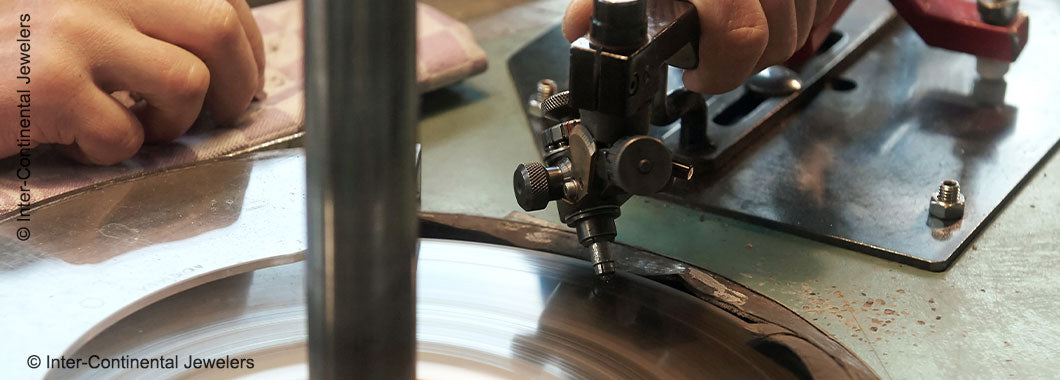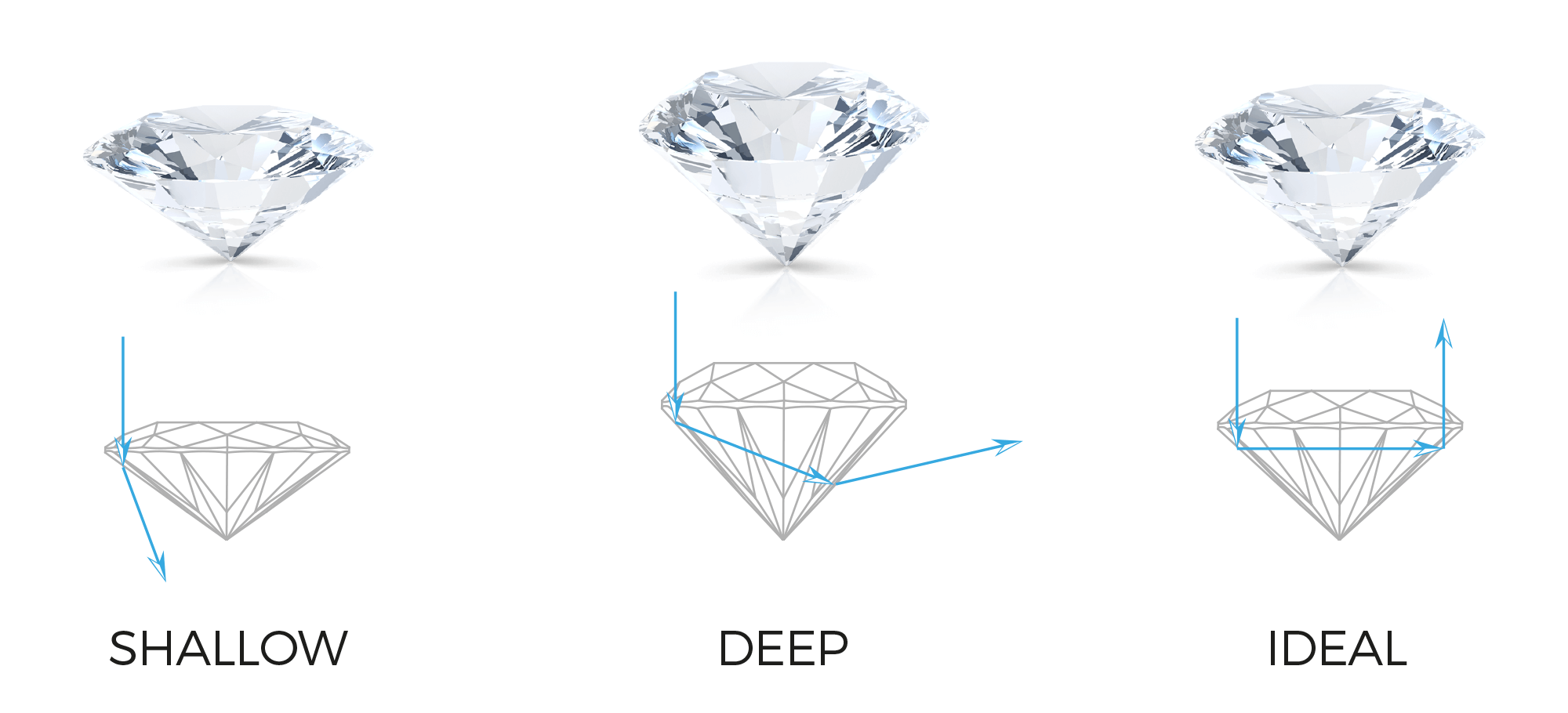
Diamond Cut
What is a diamond’s cut?
The cut of a diamond refers to how the jeweler has cut the stone and goes beyond the diamond’s shape. While shape refers to the geometry of the diamond, the cut refers to the exact proportions and dimensions of the stone, its facets, and the quality of the craftsmanship, among others.
The facets, in particular, are the flat, polished planes that make up the stone’s sides and they can vary in number depending on the shape. Diamond cuts have varying numbers of facets, with the two most popular shapes round and princess having 58 and 57 respectively.

What are the dimensions of a diamond?
A diamond can be cut in various cuts and shapes but each of them has specific dimensions that should be followed as closely as possible by the cutter. Here are the main aspects of a diamond’s cut:
- Table – this is the diamond’s large facet at its top side.
- Culet - the lowest point and/or facet of the diamond, opposite the table.
- Depth – the height of the stone from table to culet.
- Girdle – the widest circumference of the diamond.
- Pavilion – the height between the girdle and the culet.
- Crown – the height between the girdle and the table.
Different diamond cuts will have different proportion ranges for these 6 dimensions in which every good, very good or ideal cut should fit.

What aspects of a diamond’s appearance does the cut affect?
The diamond’s cut is often viewed as the most important of the 4Cs in colorless diamonds (Cut, Carat weight, Clarity, and Color) because a great diamond cut enhances a great deal of the diamond’s properties and aspects. Here are the main things a great diamond cut will impact:
- Brilliance – this is the amount of white light that’s returned from the diamond. The better the cut, the more brilliant the stone’s appearance is going to be.
- Scintillation – this is the stone’s “sparkle” when the stone, the observer, or the light source move.
- Luster – this is the light that’s reflected just off the surface of the diamond (while brilliance includes the light reflected from all external and internal surfaces of the stone).
- Dispersion – also called “fire”, this refers to the colored or “rainbow” light that the diamond reflects.
Some diamond cuts are better at improving one or more of these properties and not as great at improving others, while certain cuts are very good at maximizing all aspects of a diamond’s appearance. There are also other aspects that the cut can affect such as the apparent size of the stone and the strength of the color.
Which is the best diamond cut?
As beauty is mostly subjective, calling one of the many diamond cuts “best” over the others can be a bit misleading. However, it’s statistically undeniable that the Round Cut is both the most common, most desired, and most brilliant of all diamond cuts.
Many customers still favor other fancy cuts as they do have their advantages, such as a larger table, more emphasis on the stone’s color and so on, but the Round cut remains the classic and most beloved choice for most, with the Princess cut coming in second.
